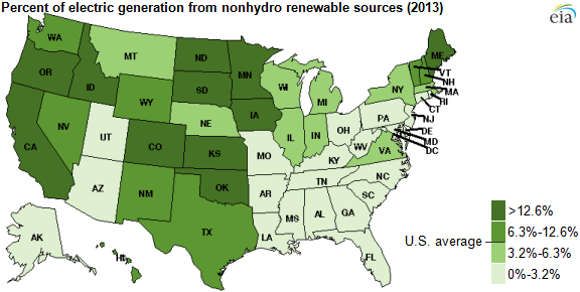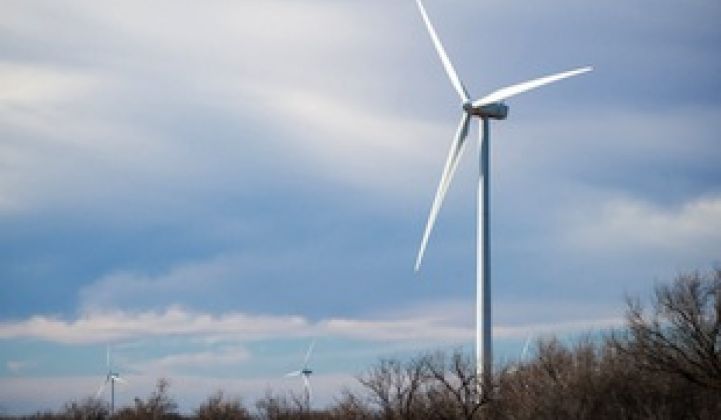There is still a significant swath of the U.S. that will continue to run on coal and gas even as many states meet their renewable portfolio standards heading toward 2020.
In January, renewable energy made up nearly 100 percent of new installed electricity capacity in the U.S., mostly driven by utility-scale solar. Last October, a study conducted by the Federal Energy Regulatory Commission found the same level of domination by renewables.
Renewable portfolio standards are driving investment in wind and solar across much of the U.S., but new data from the U.S. Energy Information Administration steps back and shows just how far there still is to go until renewable energy plays a sizeable role in the electricity mix for most states.

About 6.2 percent of total U.S. electricity supplies in 2013 came from non-hydro renewable energy, including wind, solar, biomass and geothermal, according to the EIA. That figure is up from 5.4 percent in 2012.
A handful of states were clearly out front; eleven produced more than twice the national average from renewables. Some states are obvious, such as California, Texas and windy Midwestern states. Maine took the lead, however, because of its high proportion of biomass generation from its wood industry, which is renewable but not necessarily clean.
Although solar power has been atop recent numbers when it comes to new installed capacity, wind still reigns overall, accounting for more than a quarter of net electricity in Iowa and South Dakota. In California, 2013 was the first year that wind overtook geothermal.
The figures show that many states with renewable portfolio standards still have a ways to go to meet those mandates or goals, which usually range from about 15 percent to 25 percent renewables by 2020. Some states include large-scale hydro generation in their RPS.
The numbers also do not reflect distributed generation or energy efficiency. GTM Research estimates by 2016, solar installers will install a solar system every 80 seconds. Energy efficiency, on the other hand, has been one of the reasons that some older coal and nuclear plants have been shuttered in the U.S. The cost of upgrading the facilities simply cannot be justified in the face of flat-lined electricity consumption, a trend that will likely continue for years to come.
Despite the steady march of efficiency and renewable energy, the latest figures from EIA show that traditional generation is still king in much of the country and could continue that way for a long time, given the fragmented energy policy in the U.S.



